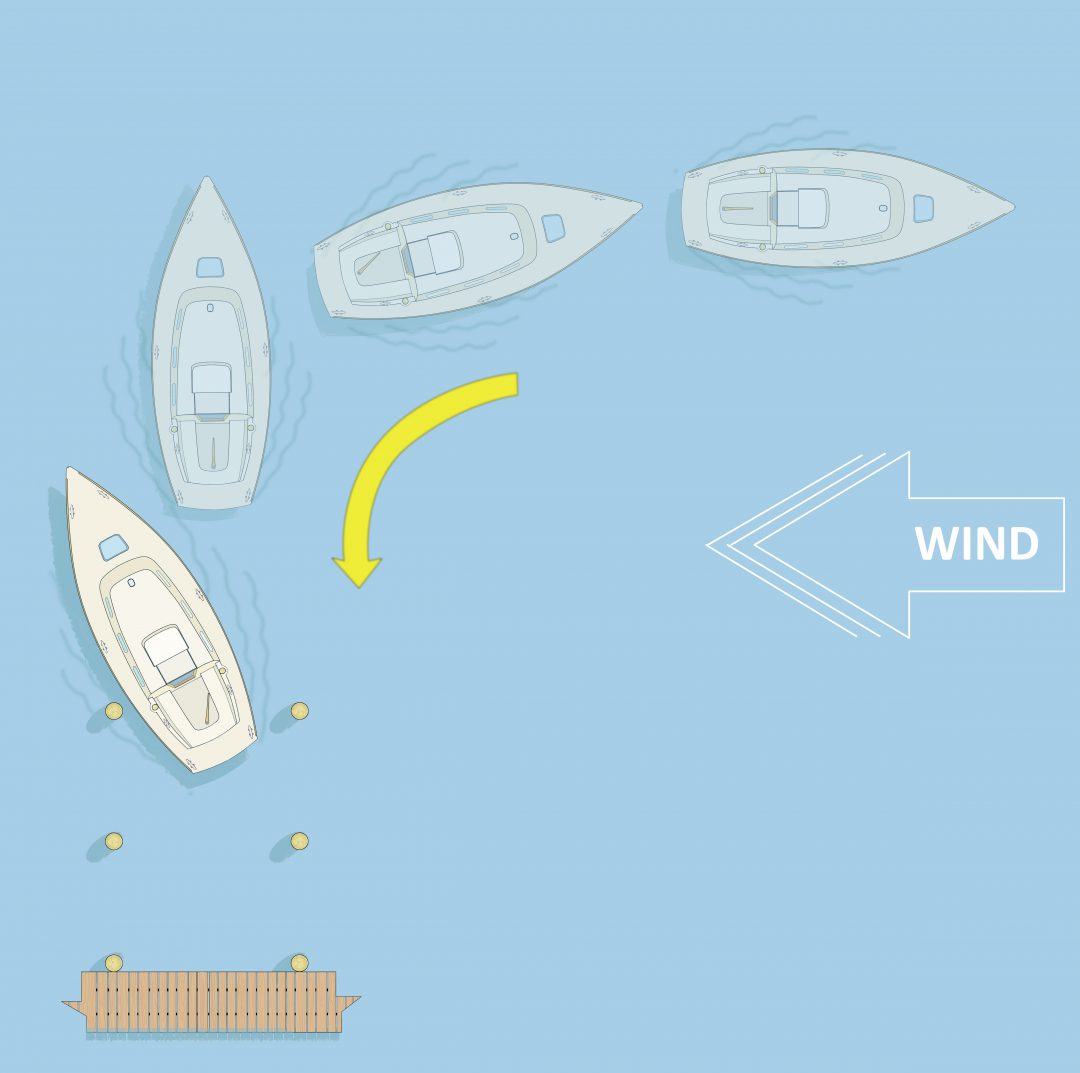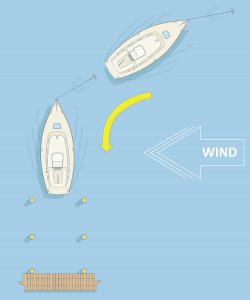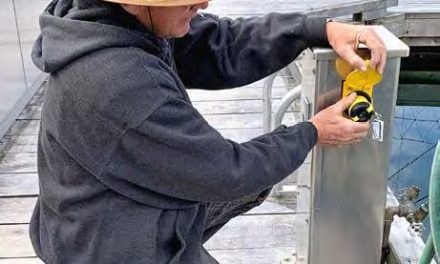
As the boat backs into the slip and the crosswind becomes apparent, the helmsman is unable to keep the bow from being pushed off track.
A friend and experienced boater related an interesting story over lunch. He’d recently had trouble backing his boat into a slip. The wind was on the beam and his bow would blow off, keeping him from being able to line up with the slip. He had to abort his approach several times. Once he was finally successful and the dock lines were secure, an old-timer approached him and offered a suggestion for next time: drudge.
The old-timer explained that drudging is the age-old method of controlling a boat’s speed or direction by intentionally dragging an anchor deployed on short scope from one end of a boat (surely the only time that dragging is encouraged!). Drudging is distinct from kedging. When drudging, once the rode’s length is set, it remains unchanged and it’s the anchor that moves. Whereas with kedging, once the anchor is set, it doesn’t move, and it’s the rode length that is adjusted.

Having dropped an anchor from the bow on short scope, it can be dragged at will, but adequate resistance is maintained to allow the bow to resist the crosswind.
Drudging may require some effort, but it may save time and reduce anxiety, possibly resulting in fewer scrapes and gouges than alternative maneuvers. Especially for boats with windlasses, drudging is a good tool for your boat-handling arsenal, something to keep in the back of your mind. I think this is true even for the helmsman with a thruster or dual engines at hand; there may come a time when something fails. But remember that no tool is of value if you’ve not practiced using it.
Illustrations by Fritz Seegers




